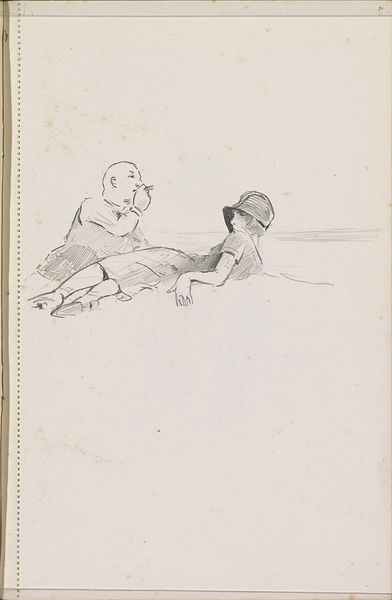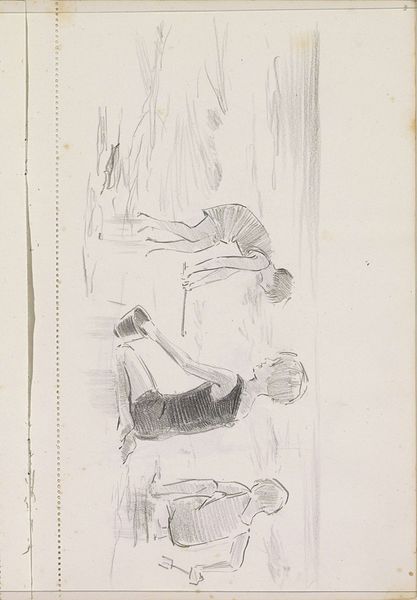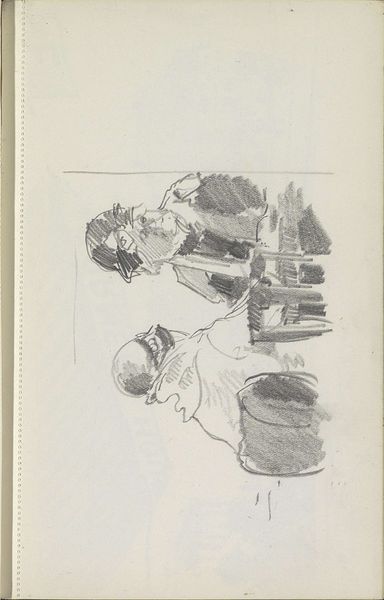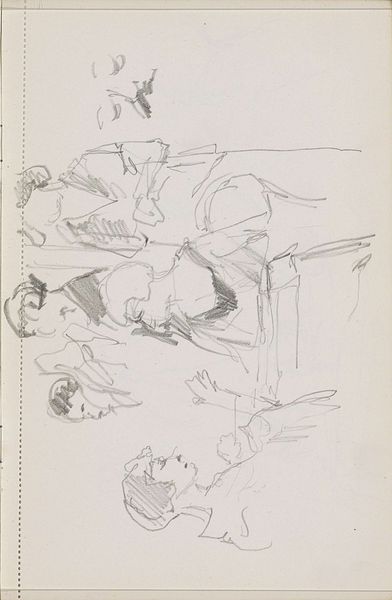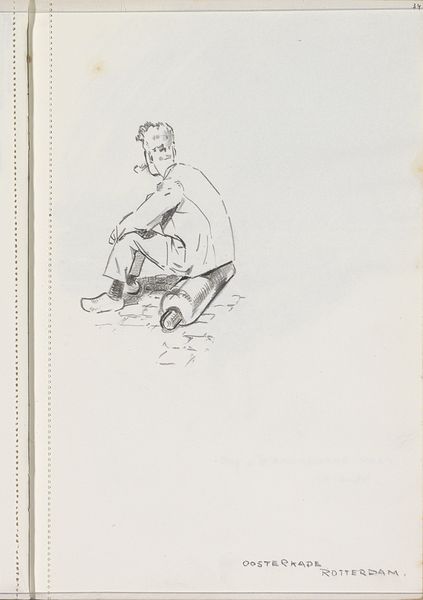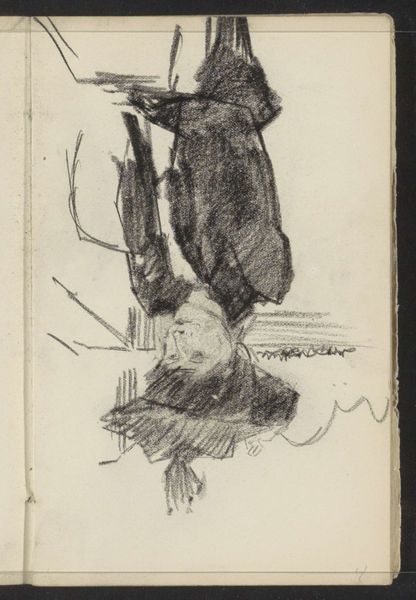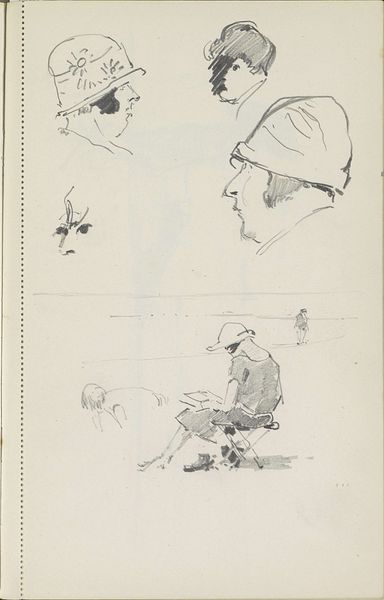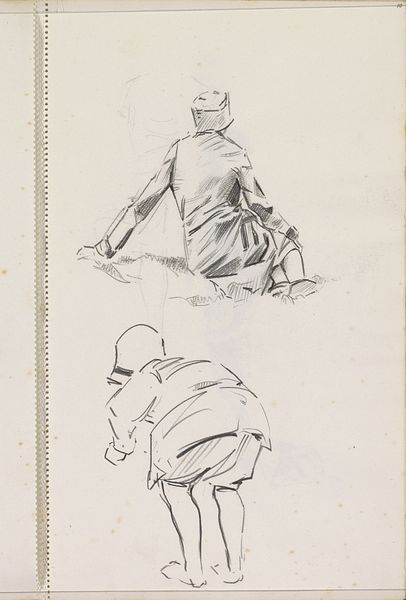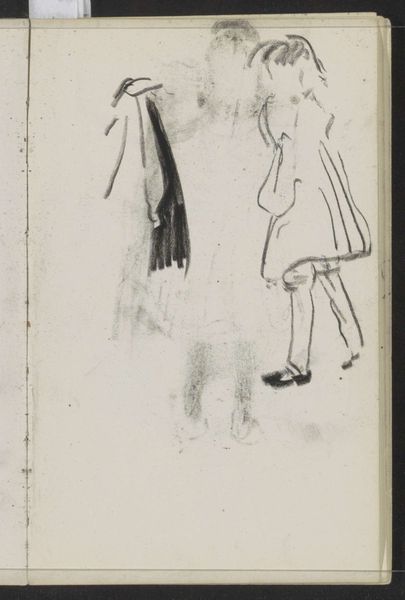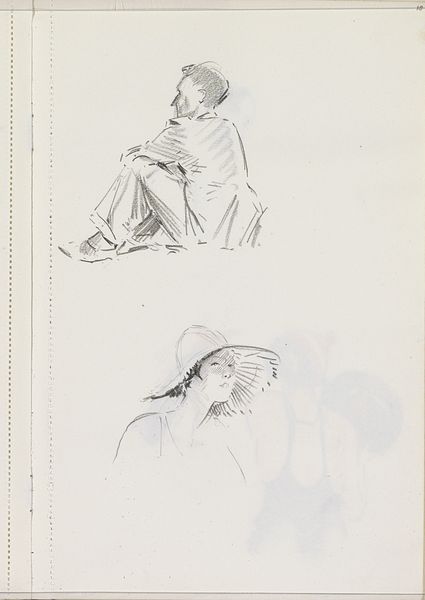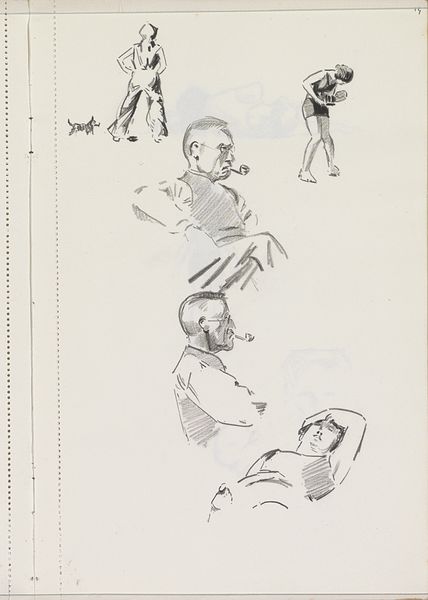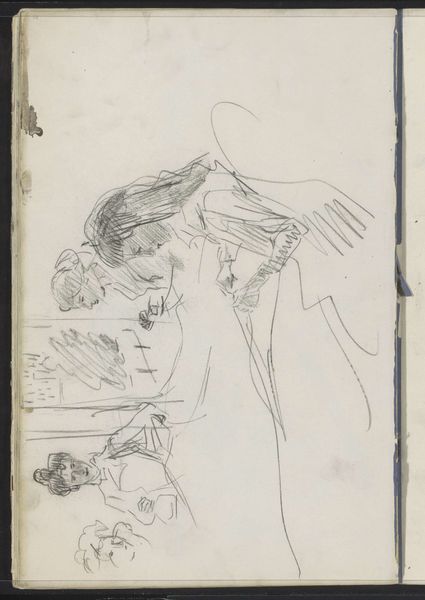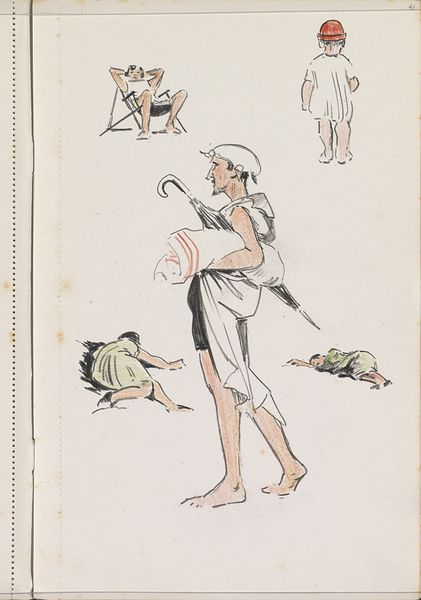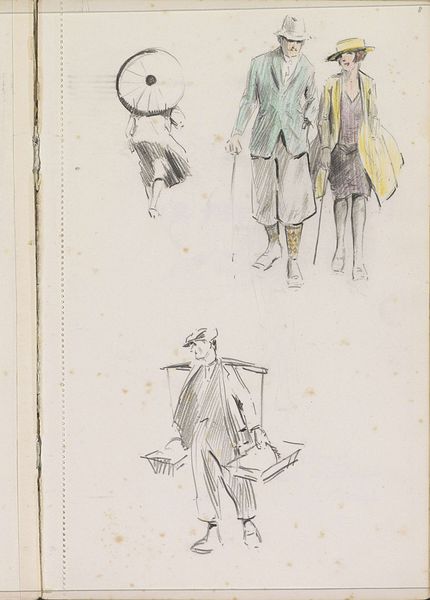
drawing, ink, pen
#
portrait
#
drawing
#
light pencil work
#
quirky sketch
#
incomplete sketchy
#
figuration
#
personal sketchbook
#
ink
#
idea generation sketch
#
sketchwork
#
ink drawing experimentation
#
pen-ink sketch
#
sketchbook drawing
#
pen
#
sketchbook art
Copyright: Rijks Museum: Open Domain
Editor: So, this is "Standing Man in a Coat and Two Lying Men" by Otto Verhagen, done around 1922 to 1925, using pen and ink. It feels like a quick study, very immediate. What stands out to you about the materiality and process behind this sketch? Curator: The starkness of the ink on paper immediately speaks to me. It highlights the artist's labor, the sheer act of mark-making. Consider the paper itself – likely a humble sketchbook page, a readily available, mass-produced material. Do you think that the context influences how we interpret its meaning? Editor: I hadn't thought about the paper that way. It's easy to see it just as a background. The artist, then, is consciously engaging with something so readily available? Curator: Precisely. And think about the production of ink, the pens… these are tools that democratize artmaking. This isn’t oil paint, reserved for the wealthy. It's accessible, mirroring perhaps the lives of the figures depicted. What is their relationship to consumption? Are they subjects of leisure or something else? Editor: I see what you mean. There’s one figure in what looks like a bathing suit and the other one with the hat seems elegantly dressed. It is difficult to tell about them. It seems the medium also plays in showing different statuses in the art. I never would have noticed that myself. Curator: The artist has made a commentary by emphasizing materials accessible to common workshops during the 1920s, turning ordinary items into art supplies. It is incredible, right? Editor: Definitely incredible! Seeing it through the lens of materials and production really opens up a new way of interpreting the work.
Comments
No comments
Be the first to comment and join the conversation on the ultimate creative platform.
